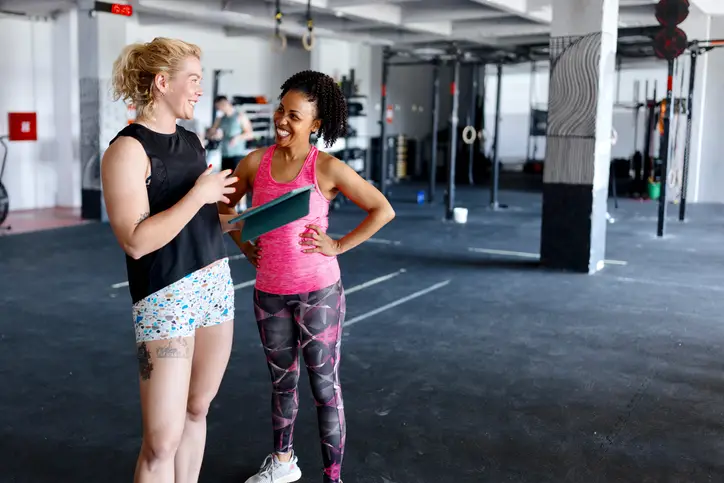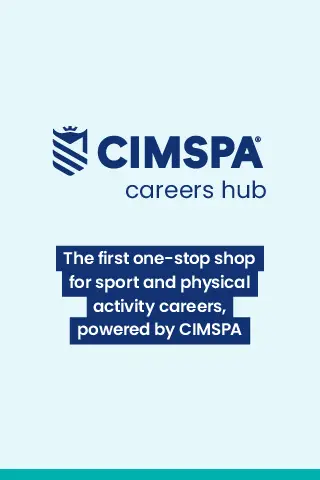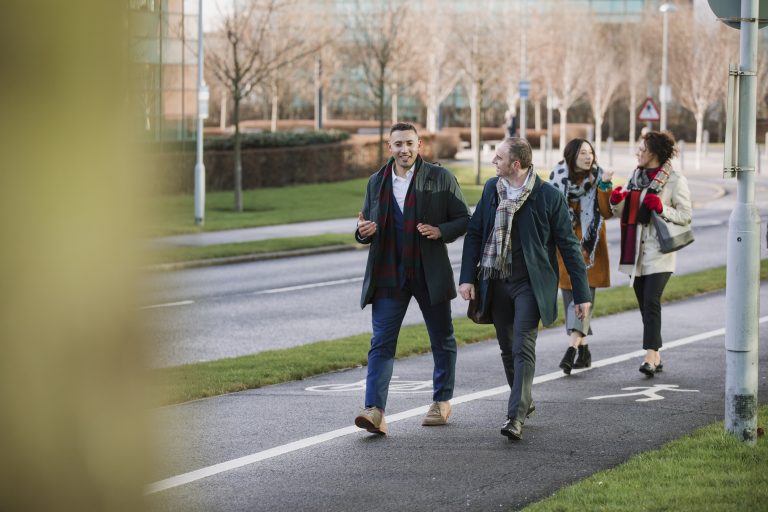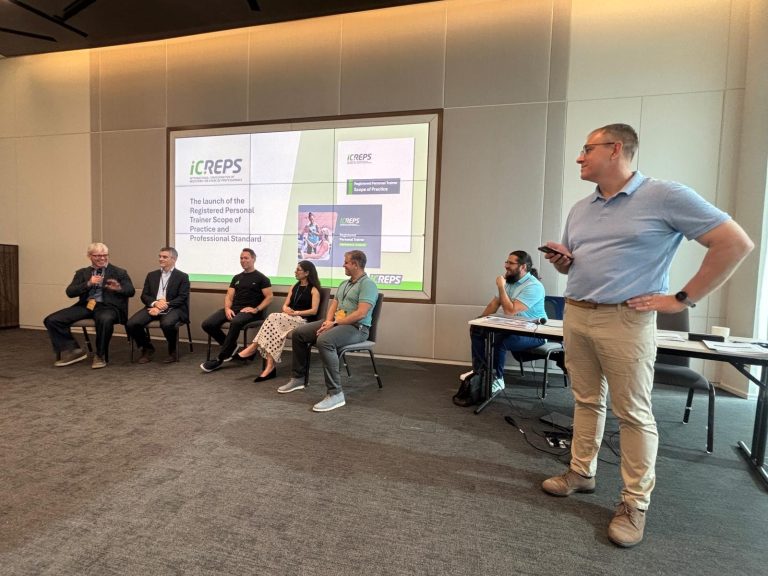Getting fit for the future
AI. It’s the buzzword from the tech world that’s quickly infiltrated our lives over the past couple of years. But what does it mean for professionals in our sector? Here we explore some ideas to harness the benefits without eroding our important human touch.

The physical activity and active wellbeing sector is evolving fast. While AI (Artificial Intelligence) once felt like a tool for techies, it’s now embedded in how many of us coach, manage and deliver services. Whether you’re a frontline instructor or part of a leadership team shaping community health programmes, understanding how AI is changing the game is becoming essential.
The important thing to recognise is that this isn’t about robots replacing humans. It’s about using technology to amplify human impact, by freeing up time, personalising support and helping us reach the people who need physical activity, and our services, the most.
Enablement not data crunching
The foundations of AI are computer systems that can learn, predict and act on information faster and more accurately than we as a human can.
AI works by learning from data. For example, if you show a computer lots of pictures of trees, it can learn to recognise what a tree looks like. The more data it has through seeing pictures of trees, the better it gets at doing its job of identifying trees.
Through machine learning it’s possible to teach a computer to do tasks that traditionally would require thinking beyond the effective processing ability or capacity of a human.
AI is touching most of our lives every day and is being used across industries to to make life easier, for efficient and faster. Many of us use assistants such as Siri or Alexa to help with everything from ordering a meal in a different language to doing our weekly shop. Both personally and professional we come across recommendation on what to read, buy or watch based on our previous interactions, behaviours and characteristics. Self-driving cars are now commonplace in major cities across the world.
In physical activity, fitness and active wellbeing AI has entered our world in a variety of ways including:
- Adaptive training apps that adjust workout intensity, duration and focus in real time.
- Wearable technology that monitor recovery, sleep and mental wellbeing to guide activity.
- Automated scheduling and client self-service management systems that save hours of admin time.
- Predictive analytics that identify at-risk members/customers based on behaviours before they disengage.
- AI chatbots and virtual coaches that provide 24/7 support and motivation when the professional isn’t available.
What we need to remember is that these don’t replace humans, they are simply a tool to help us.
The real potential benefits in AI lie in how it can free up time and capacity to do the real value work that only humans can do, to motivate, empathise, support behaviour change and build trust.
Let’s take a look at what it means for different roles within the sector.
For Practitioners
Ultimately its about less admin and more impact. Practicioners often wear many hats. They’re an instructor, an administrator, a marketer, a motivator, and much more besides. The reality is, much of their time is eaten up by manual tasks like booking sessions, chasing attendance, writing follow-up messages, programming plans and collating notes.
AI-powered tools can now automate many of these tasks, including:
- Session programming software that auto-generates plans based on client goals, ability and recent activity
- Voice-to-text client notes that update a CRM systems or customer database instantly.
- Automated reminders and follow-ups tailored to member behaviour and preferences.
- Chatbots that handle common queries and reschedule session bookings without human intervention.
This doesn’t just save time, it also frees up headspace to focus more on building relationships, digging into client motivation and responding meaningfully to barriers which is especially important for clients who may be anxious, neurodivergent, inactive or managing long-term health conditions.
With AI handling the repetitive work, practitioners can re-invest their energy in what really makes a real difference, that person-centred support.
For Managers
Here it’s all about strategic use of time and resources to help leaders be proactive rather than reactive particularly when budgets and staffing are tight.
Predictive retention tools can flag participants that are showing early signs of disengagement. This means that instead of waiting until someone has already dropped off, managers can direct staff to make a timely, personal intervention to keep that customer engaged.
AI-enhanced scheduling systems can analyse attendance patterns to suggest efficient class/session times and resource allocation. This can reduce waste generated through low participant numbers and/or keep customers satisfied by having sessions at the times they want them.
Automated reporting tools can compile outcomes data on everything from health metrics to attendance and engagement, without days of manual work harvesting and analysing statistics.
This all results in management teams spending less time on spreadsheets and rotas and more time supporting practitioners, running community outreach and developing inclusive programmes.
Reaching the unreachable
One of the most powerful and still underused applications of AI in the active wellbeing sector is its potential to reach underrepresented communities more effectively.
This can be done through a range of tasks such as identify patterns of disengagement by postcode, demographic or other characteristic and analysing this against national or global trends. This can help to identity and tailor outreach strategies which specifically address hyper-local barriers. This is particularly impactful where those barriers are hidden in plain sight such as because of a cultural mismatch in activity programming, inaccessible language or poor time-slot availability
Some other ways that AI can help is in the creation of personalise onboarding plans for people with specific health needs or anxieties around exercise or through virtual assistants that support non-English speakers, people with additional needs or those with lower literacy levels, translating information into an accessible format.
This makes it easier to scale personalisation by creating multiple pathways in to physical activity without overloading staff.
AI doesn’t replace the need for face-to-face support but it does make it easier to direct human effort where it’s most needed and would have the greatest impact. That might mean that capacity is created to provide extra check-ins for someone managing a mental health condition or having the capacity to deliver a local session in a community centre in a location where participation has historically been low.

Safeguarding the human care
As with any technology, there are risks with AI particularly around data privacy, equity and the over-reliance on automation.
It’s essential to ensure that any systems being used are GDPR-compliant and that users are trained in responsible data use.
It’s also important to appreciate that AI models can reflect biases in their design and therefore it’s important to monitor whether algorithms are unfairly prioritising certain groups over others.
What’s crucial is that we see AI as an aid, not a replacement, preserving our role in empathetic, culturally aware, relationship-based work.
Put simply, AI should serve humans, not the other way around.
Top tips for gaining from AI:
- Map where your time goes, look at how many hours each week go on admin, programming and reporting. These are prime for AI support.
- Try a tool in one area of work. Whether it’s a chatbot for bookings or an AI-led member re-engagement system, test and learn before rolling out.
- Upskilling and developing digital confidence is essential. Explore CPD sessions on using AI-powered tools responsibly and effectively.
- Listen to your clients who are less likely to engage. Asking what would help them feel more seen, supported and included and then seek AI tools to help.
- Monitor impact, not just inputs using AI to track real outcomes beyond just attendance, like confidence, activity levels, motivations and retention.
Rewiring the sector to harness human value
We often say people are our greatest asset in the physical activity sector. AI allows us to prove it by freeing our people up from doing repetitive work and allowing them to focus on human connection, creativity and compassion.
More time spent with people rather than paperwork makes the services that we deliver feel more relevant, personal and accessible than ever before.
The future isn’t about tech versus people. It’s about tech for people and making sure that as professionals we’re equipped, empowered, and excited to lead that future, including taking advantage of the potential of AI.








